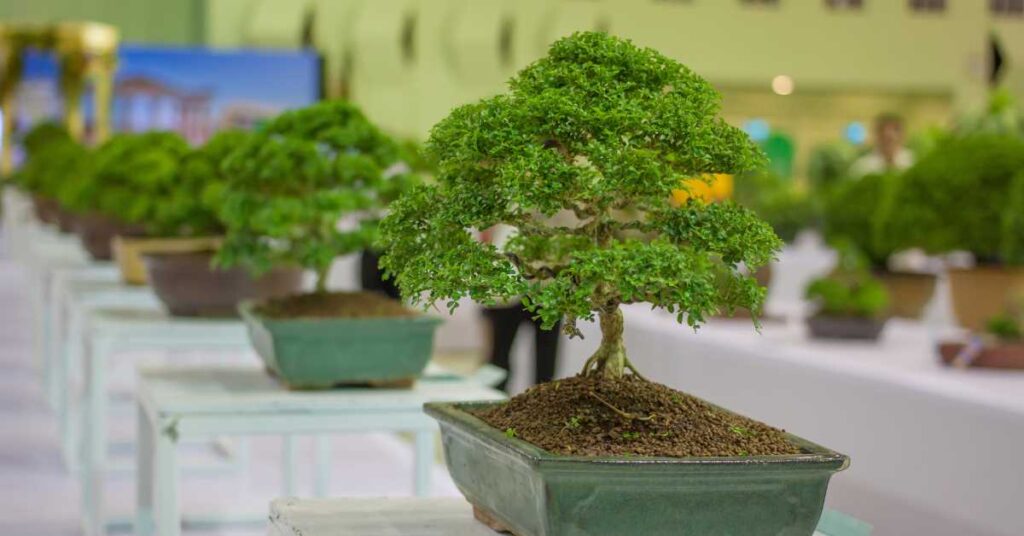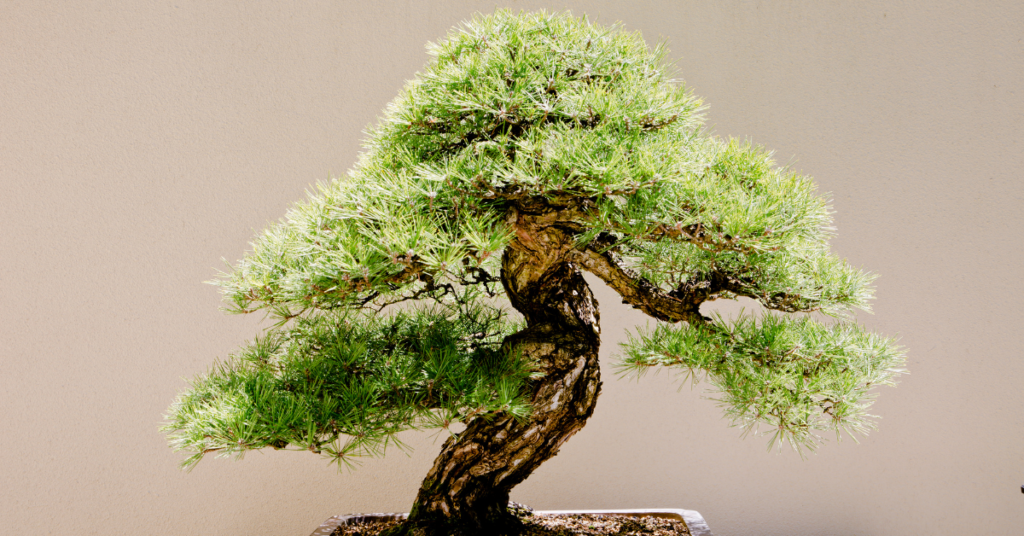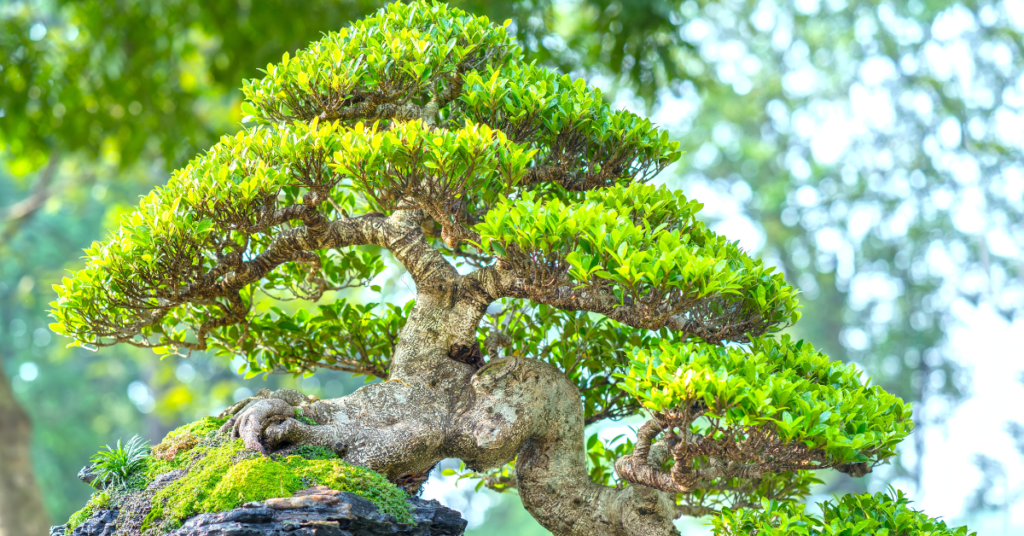Can you use cactus soil for bonsai? Yes, you can use cactus soil for bonsai, but it’s important to consider the specific needs of your bonsai tree. Cactus soil is designed to drain water quickly, which is beneficial for bonsai trees that are prone to root rot when overwatered. This type of soil is especially suitable for succulent bonsais or those that prefer drier conditions. However, not all bonsai trees thrive in such fast-draining soil. If your bonsai requires more moisture retention, you might need to mix the cactus soil with other types of soil or organic matter to achieve the right balance. Always research the specific requirements of your bonsai species to ensure optimal growth and health.
Are you a bonsai enthusiast looking for the perfect soil mix for your plant? Perhaps you’re wondering if cactus soil could be a suitable option. While it may seem like an unconventional choice, there are many factors to consider when selecting the right soil for your bonsai.
In this article, we’ll explore whether or not cactus soil is a viable option for bonsai and what benefits it can offer.
Cactus soil is often used for plants that require well-draining soil, such as succulents and cacti. This type of soil is composed of sand, grit, and other materials that allow water to flow through quickly and prevent root rot.
Bonsai trees also require well-draining soil to thrive, making cactus soil an appealing option for some growers. However, there are also potential drawbacks to using cactus soil for bonsai that need to be considered before making a decision.
Let’s dive deeper into the pros and cons of using cactus soil for your bonsai tree.

Understanding Bonsai Soil Requirements
Bonsai trees require a specific type of soil composition and moisture retention to thrive. Traditional garden soil is not suitable for bonsai, as it tends to retain too much water and can lead to root rot.
The ideal bonsai soil should provide adequate drainage while retaining enough moisture for the tree’s roots to absorb. Bonsai soil typically consists of a mix of inorganic and organic components, such as lava rock, sand, peat moss, and perlite.
These materials provide the necessary structure for good drainage while also retaining some moisture. Finding the right balance between these components is crucial for creating a healthy growing medium that will promote optimal bonsai growth and development.
What Is Cactus Soil?
Cactus soil is a type of soil mixture commonly used for growing cacti and succulents. It is known for its excellent drainage properties, which makes it ideal for plants that do not require frequent watering. The primary ingredients of cactus soil are sand, perlite, and peat moss. These components work together to create a well-draining medium that allows water to flow through quickly without retaining too much moisture.
When it comes to bonsai trees, using cactus soil can be beneficial in several ways. Here are three benefits of using cactus soil for bonsai:
- Improved Drainage: Bonsai trees need well-draining soil to prevent root rot and other fungal diseases. Cactus soil’s ability to drain excess water quickly can help prevent these issues.
- Increased Aeration: Bonsai trees also need adequate air circulation around their roots to thrive. The porous nature of cactus soil allows for better airflow, promoting healthy root growth.
- Nutrient-Rich: While regular potting soil may contain added fertilizers, cactus soil naturally contains the essential nutrients that bonsai trees need to grow strong and healthy.
Compared to regular potting soil, cactus soil has distinct advantages when it comes to growing bonsai trees. With its excellent drainage properties, increased aeration, and nutrient-rich composition, it’s an ideal choice for this delicate plant species.

Benefits Of Using Cactus Soil For Bonsai
Using cactus soil for bonsai has several benefits that make it a great choice for keeping your bonsai trees healthy and thriving.
One of the main advantages is its excellent drainage and water retention properties. Since bonsai trees require well-draining soil, cactus soil provides just that. Its porous structure allows for water to flow through it quickly, preventing root rot, which is a common issue when the soil doesn’t drain properly.
Additionally, cactus soil also offers great nutrient availability and pH balance for your bonsai trees. The high mineral content in cactus soil ensures that your trees have all the necessary nutrients they need to grow strong and healthy. Moreover, its slightly acidic pH level helps maintain an optimal pH range that most bonsai trees prefer.
With these benefits combined, using cactus soil can help ensure that your bonsai tree grows beautifully with minimal effort on your part.
Drawbacks Of Using Cactus Soil For Bonsai
Well, if you want your bonsai to look like a prickly cactus, then by all means, use cactus soil. But if you actually want it to thrive and grow into a beautiful miniature tree, then you may want to reconsider.
The truth is that while cactus soil may have its advantages for succulents and other desert plants, it is not the best option for bonsai. One of the drawbacks of using cactus soil for bonsai is that it is too well-draining. Bonsai trees require a balance of moisture and oxygen in their roots, and cactus soil tends to dry out too quickly, which can lead to root damage or death.
Furthermore, cactus soil lacks the nutrients that bonsai trees need to grow healthy and strong. So while it may seem like an easy solution, using cactus soil could actually be detrimental to your bonsai’s health in the long run. There are alternatives available that are specifically formulated for bonsai trees and provide the right amount of moisture retention and nutrient levels necessary for their growth.
Assessing Your Bonsai’s Needs
Despite its name, cactus soil may not always be the best option for your bonsai. As mentioned in the previous section, it has drawbacks that can affect the health of your plant. However, this doesn’t mean that you shouldn’t consider using it at all.
Before deciding on what type of soil to use for your bonsai, you need to assess its specific needs.
One important factor to consider is drainage. Bonsai trees require good drainage so that their roots don’t get waterlogged and rot. If you’re using cactus soil, make sure that it’s not too dense or compacted as this can hinder proper drainage. On the other hand, if you’re using regular potting soil, you may need to add some perlite or sand to improve drainage.
Another factor to keep in mind is pH levels. Some bonsai species prefer acidic soils while others thrive in more alkaline conditions. You can evaluate your bonsai’s pH levels by testing the soil with a pH meter or by observing the types of plants growing around it. Once you know where your tree falls on the spectrum, you can adjust its soil accordingly.
Assessing your bonsai’s needs isn’t just about choosing between cactus soil and regular potting mix. It involves taking into account various factors such as light exposure, humidity levels, and fertilization requirements as well.
By doing so, you’ll be able to create an environment that promotes healthy growth and longevity for your prized plant.
How To Prepare Cactus Soil For Bonsai
Are you planning to use cactus soil for your bonsai? While it may seem like a good idea since both plants require well-draining soil, it’s essential to prepare the soil mix appropriately. Cactus soil tends to be too coarse and lacks the necessary nutrients for bonsai trees. However, with some adjustments, you can create a suitable growing medium.
To prepare cactus soil for bonsai, start by choosing appropriate additives. You will need organic matter such as peat moss or coco coir to retain moisture and provide nutrients. Perlite or pumice can also be added to improve drainage while allowing air circulation in the soil.
Once you have selected the additives, mix them with the cactus soil in equal parts until well combined. The result should be a well-balanced growing medium that supports healthy root development and growth of your bonsai tree.
Remember that proper preparation of soil is crucial for the success of your bonsai tree. With a little effort, you can create a suitable growing medium using cactus soil as a base while incorporating appropriate additives to support optimal growth and health of your plant.
Alternatives To Cactus Soil For Bonsai
When it comes to bonsai, using the right soil mixture is crucial for the plant’s health and growth. While cactus soil can be used for bonsai, it may not always be the best option.
Fortunately, there are alternatives to cactus soil that can work just as well or even better. One alternative to consider is topsoil mixed with organic materials such as peat moss, perlite, and vermiculite.
This mixture provides a balance of water retention and drainage while also providing nutrients for the tree’s roots. It is important to note that this mixture may need to be adjusted depending on the specific species of bonsai being grown.
Tips For Choosing The Right Soil Mix
When it comes to bonsai, choosing the right soil mix is crucial for the health and growth of your tree.
One common question that arises is whether cactus soil can be used for bonsai. While cactus soil may seem like a good option due to its fast-draining properties, it may not provide the necessary nutrients and water retention that bonsai trees need.
It’s important to understand the difference between organic and inorganic soil when choosing a mix for your bonsai. Organic soil contains materials such as compost, peat moss, and bark that provide nutrients and promote healthy microbial activity in the soil. Inorganic soil, on the other hand, is made up of materials such as perlite or pumice which improve drainage but do not provide any nutrients.
Balancing water retention is also crucial for bonsai. While too much water can lead to root rot, too little can cause dehydration and stress on the tree. A well-balanced soil mix should be able to retain enough moisture while still allowing excess water to drain away.
Maintaining Your Bonsai’s Soil Health
When it comes to maintaining your bonsai’s soil health, it’s important to consider the composition of the soil. Bonsai trees require well-draining soil that is rich in nutrients.
While cactus soil may seem like a viable option due to its ability to drain water effectively, it is not the best choice for bonsai trees. Cactus soil is typically too alkaline and lacks the necessary nutrients that bonsai trees need to thrive.
To ensure that your bonsai tree receives the optimal level of nutrients and drainage, it’s best to use a specialized bonsai soil mix. This mix typically includes components such as akadama, pumice, and lava rock.
Akadama is a type of clay that retains moisture while allowing for proper drainage, while pumice and lava rock provide additional drainage and aeration. By using this specialized mix, you can maintain your bonsai’s soil health and promote healthy growth.
To further promote healthy growth in your bonsai tree, it’s important to implement proper watering techniques. Overwatering or underwatering can both have negative effects on your tree’s health.
A good rule of thumb is to water your tree when the top inch of soil feels dry to the touch. When watering, make sure to thoroughly soak the roots until water begins draining out of the bottom of the pot. Additionally, avoid letting your tree sit in standing water as this can lead to root rot.
By following these tips and utilizing specialized bonsai soil mix, you can help ensure that your bonsai stays healthy and vibrant for years to come.
Frequently Asked Questions About Bonsai Soil
Many beginners in bonsai growing often ask if cactus soil can be used for their plants. The answer is yes, but with caution.
Cactus soil is known to have a quick-draining composition, which is suitable for plants that prefer dry conditions. However, bonsai trees require a more balanced soil moisture control.
Bonsai soil composition plays a significant role in the health and growth of your plant. It should provide proper drainage while retaining enough water and nutrients for the roots to absorb.
Using cactus soil alone may lead to over-drying of the soil, causing dehydration and root rot. It is best to mix it with other types of soils like organic potting mix or lava rock to achieve the ideal composition for your bonsai tree’s specific needs.
Frequently Asked Questions
Can Cactus Soil Be Used For All Types Of Bonsai Trees?
Looking for the best bonsai soils?
There are plenty of options out there, and while cactus soil may work well for some types of bonsai trees, it’s not necessarily the best choice for all.
If you’re looking for alternatives to cactus soil, consider options like Akadama or lava rock, which can provide a more balanced blend of nutrients and drainage.
Ultimately, the right soil choice will depend on the specific needs of your bonsai tree, so be sure to do your research and experiment with different options until you find the one that works best for you.
How Often Should Cactus Soil Be Replaced In A Bonsai Pot?
When it comes to bonsai trees, using organic soil brings a lot of benefits. Not only does it promote healthy growth, but it also ensures that your bonsai receives the necessary nutrients it needs to thrive.
However, just like any other plant, soil replacement is crucial in maintaining its health. Determining when to replace the soil depends on several factors such as the type of tree and how fast it grows.
As a general rule of thumb, replacing the soil every two years is recommended. It’s best to keep an eye out for signs like yellowing leaves or stunted growth as they may indicate that the soil needs changing.
By staying on top of soil maintenance, you’ll allow your bonsai tree to flourish and live a long and healthy life.
Can Cactus Soil Be Mixed With Other Types Of Soil For Bonsai?
If you’re looking to mix options for your bonsai soil, there are several alternatives that can complement cactus soil.
One option is akadama soil, which is a popular choice for bonsai growers due to its water retention and nutrient absorption properties.
Another alternative is lava rock, which helps with drainage and aeration.
You can also mix cactus soil with perlite or sand to improve drainage and prevent waterlogging.
Experimenting with different soil types can help you find the best combination for your bonsai’s growth and health.
Remember to replace your bonsai’s soil regularly, regardless of the type of soil used, to ensure optimal growing conditions.
Is Cactus Soil Ph Balanced For Bonsai Trees?
Back in the day, bonsai enthusiasts had limited options when it came to soil types. But nowadays, with advances in horticulture, there are alternative soils available for bonsai trees.
When it comes to cactus soil, however, adjusting pH levels may be necessary for optimal growth. While cactus soil is well-draining and can be mixed with other soils for bonsai purposes, its pH balance may not be ideal for all species of bonsai trees.
Therefore, it’s important to test and adjust the soil’s pH level accordingly before using it on your beloved miniature trees.
Can Cactus Soil Be Used For Bonsai Trees That Require A Lot Of Moisture?
Looking for a cactus soil alternative that can retain moisture for your moisture-loving bonsai trees?
One option to consider is using a cactus soil blend mixed with other organic materials that can hold onto water.
While cactus soil is typically designed to provide excellent drainage and prevent over-watering, it may not be the best choice for bonsai trees that require frequent watering.
By mixing in other moisture-retaining elements like peat moss or coconut coir, you can create a blend that will help your bonsai thrive without becoming waterlogged.
Conclusion
In conclusion, using cactus soil for bonsai may be possible for some types of trees, but it is not recommended for all. It is important to consider the specific moisture and nutrient needs of your bonsai tree before deciding on a soil type.
Additionally, mixing cactus soil with other types of soil may provide better balance and nutrition for your tree.
As with any aspect of bonsai care, it is essential to regularly monitor and adjust your soil as needed.
Don’t let your bonsai become a prickly cactus! Take the time to properly assess its needs and provide the right environment for growth and health.
Remember that every bonsai tree deserves individual attention and care, just like we do in our own lives.



